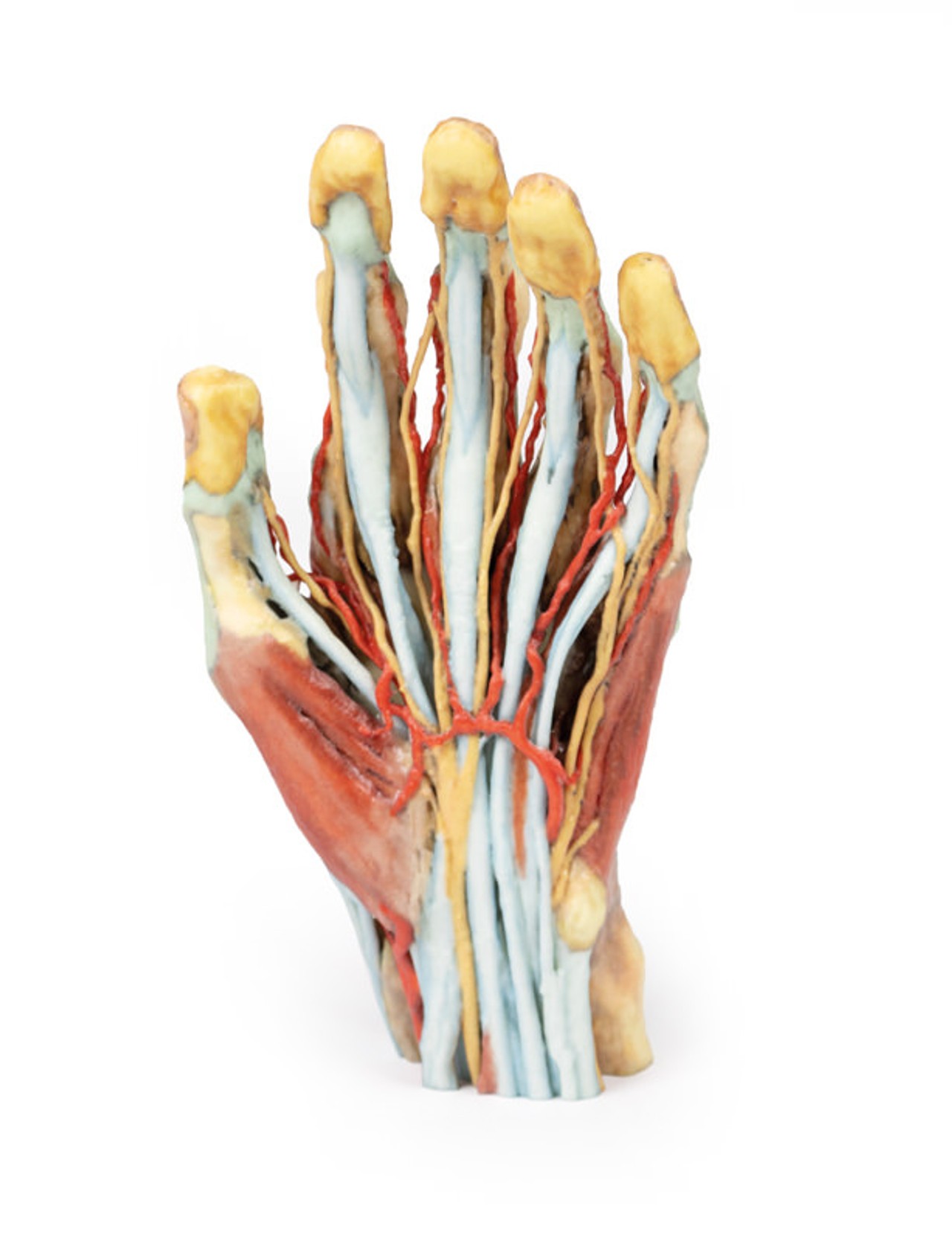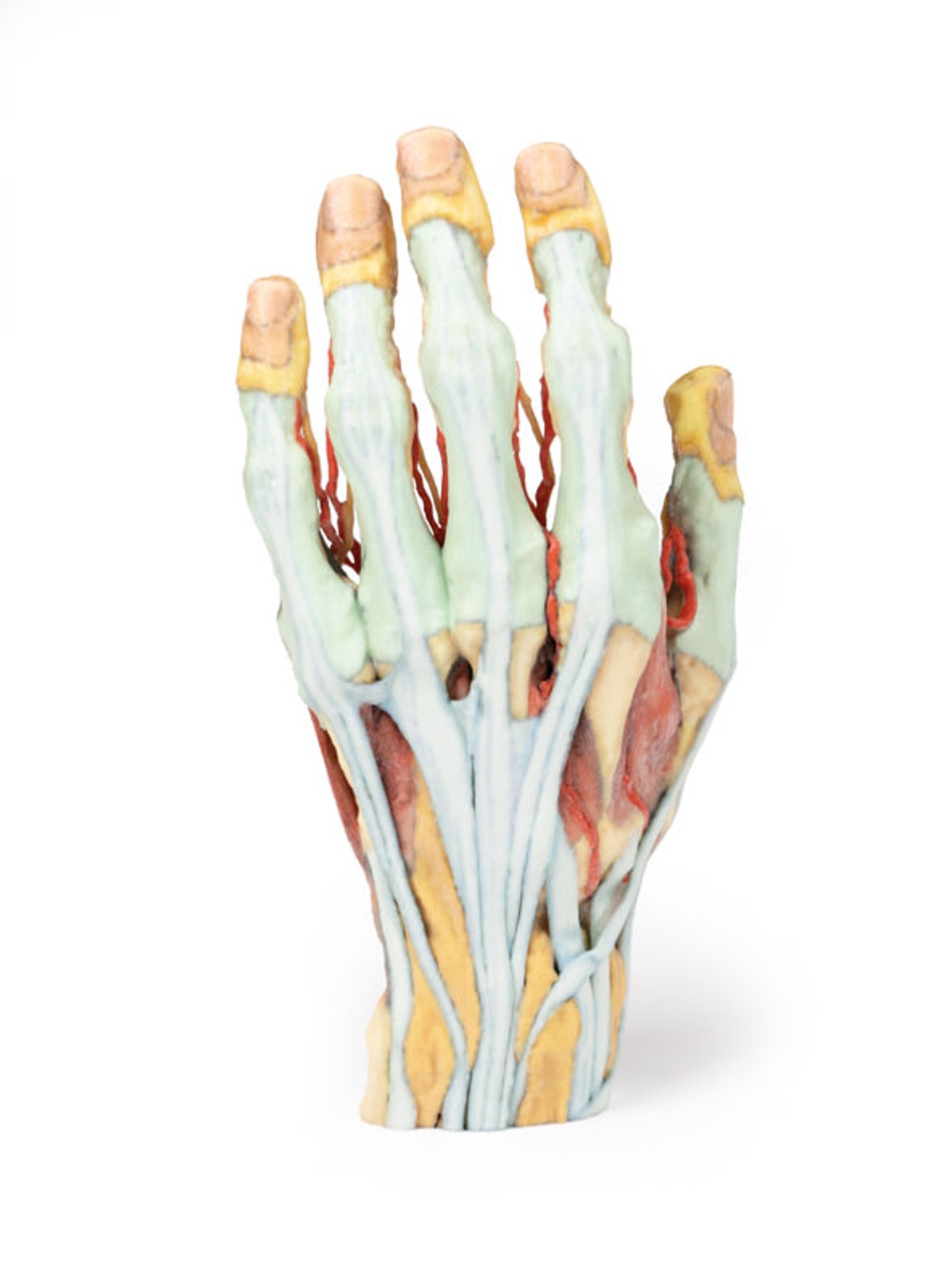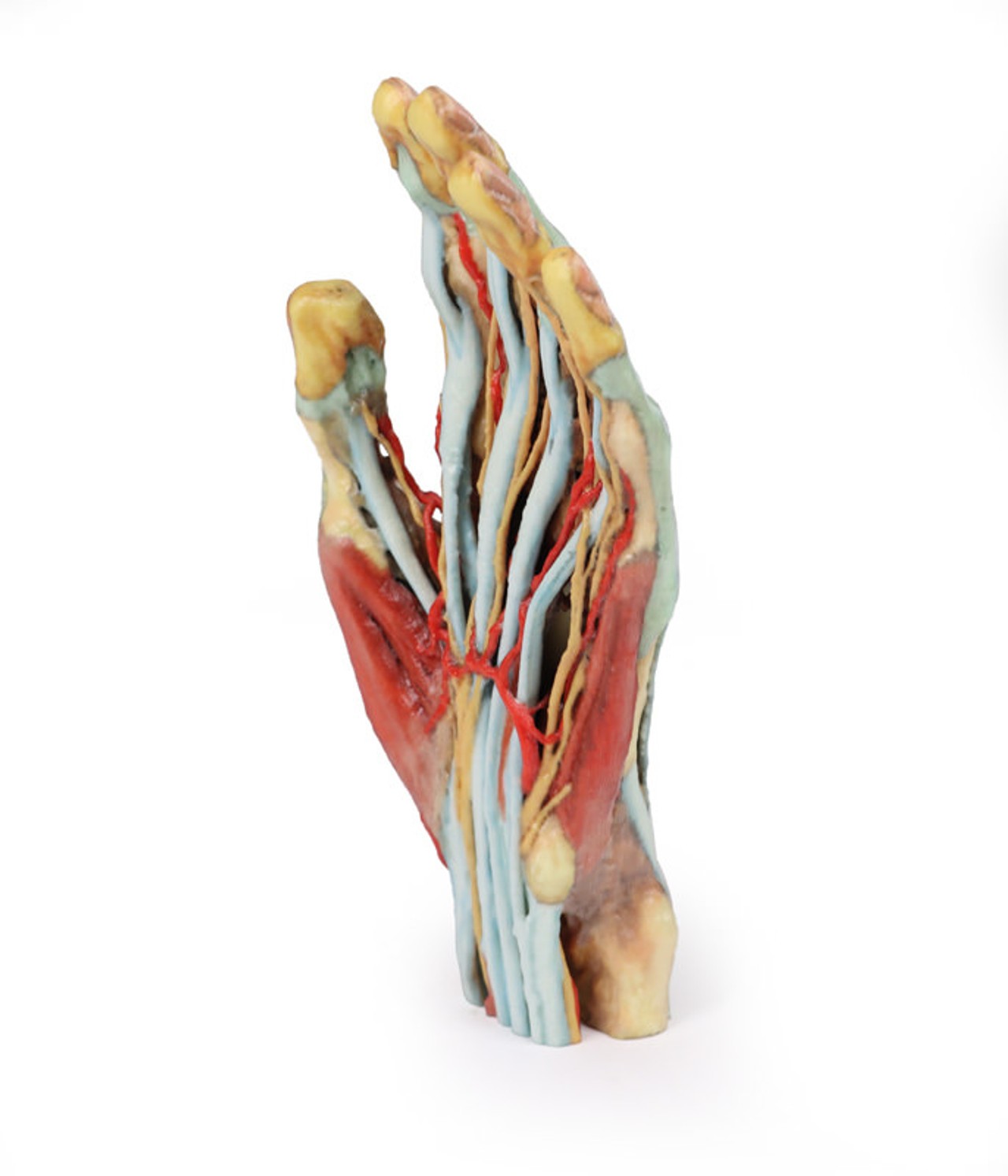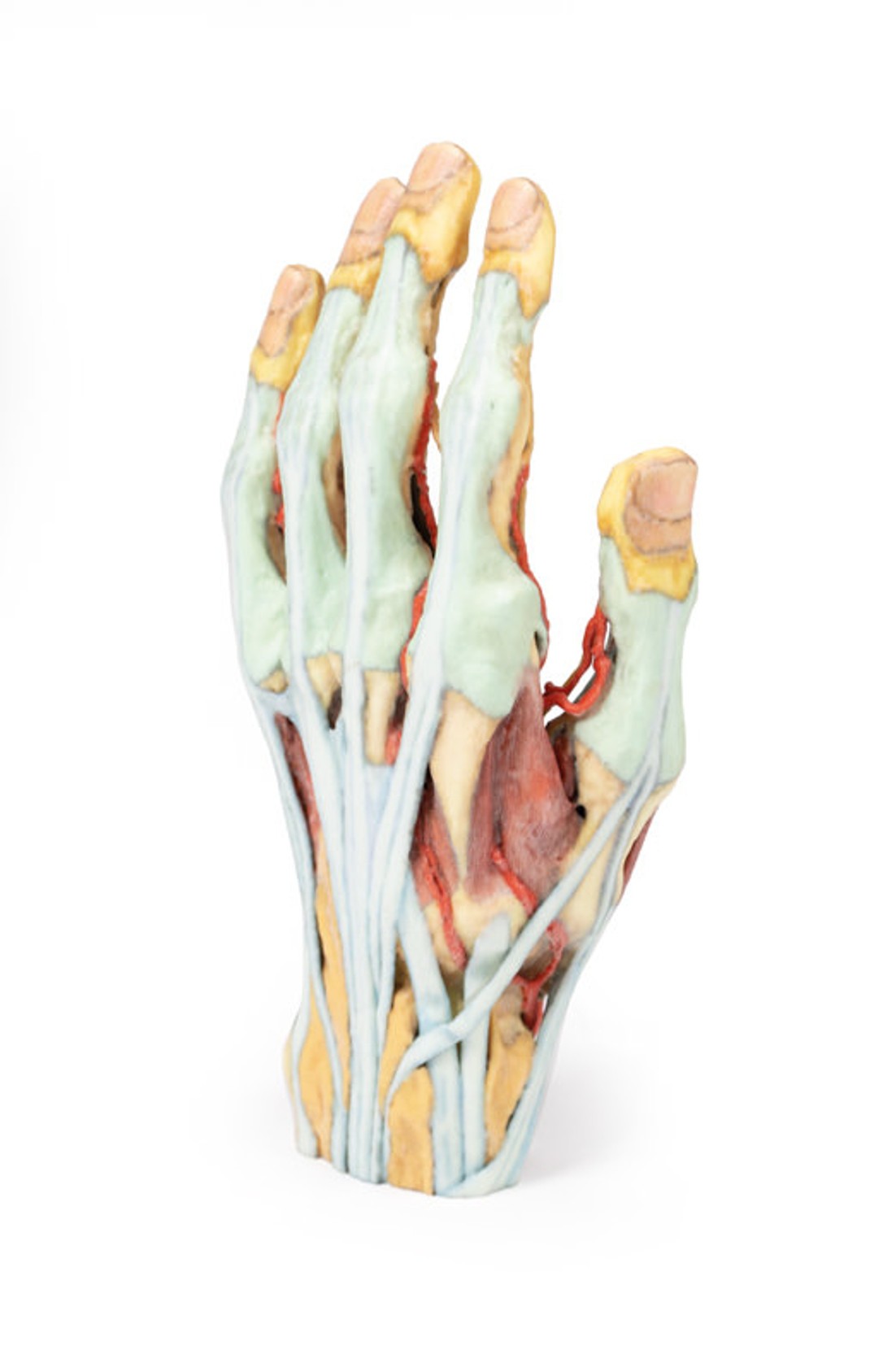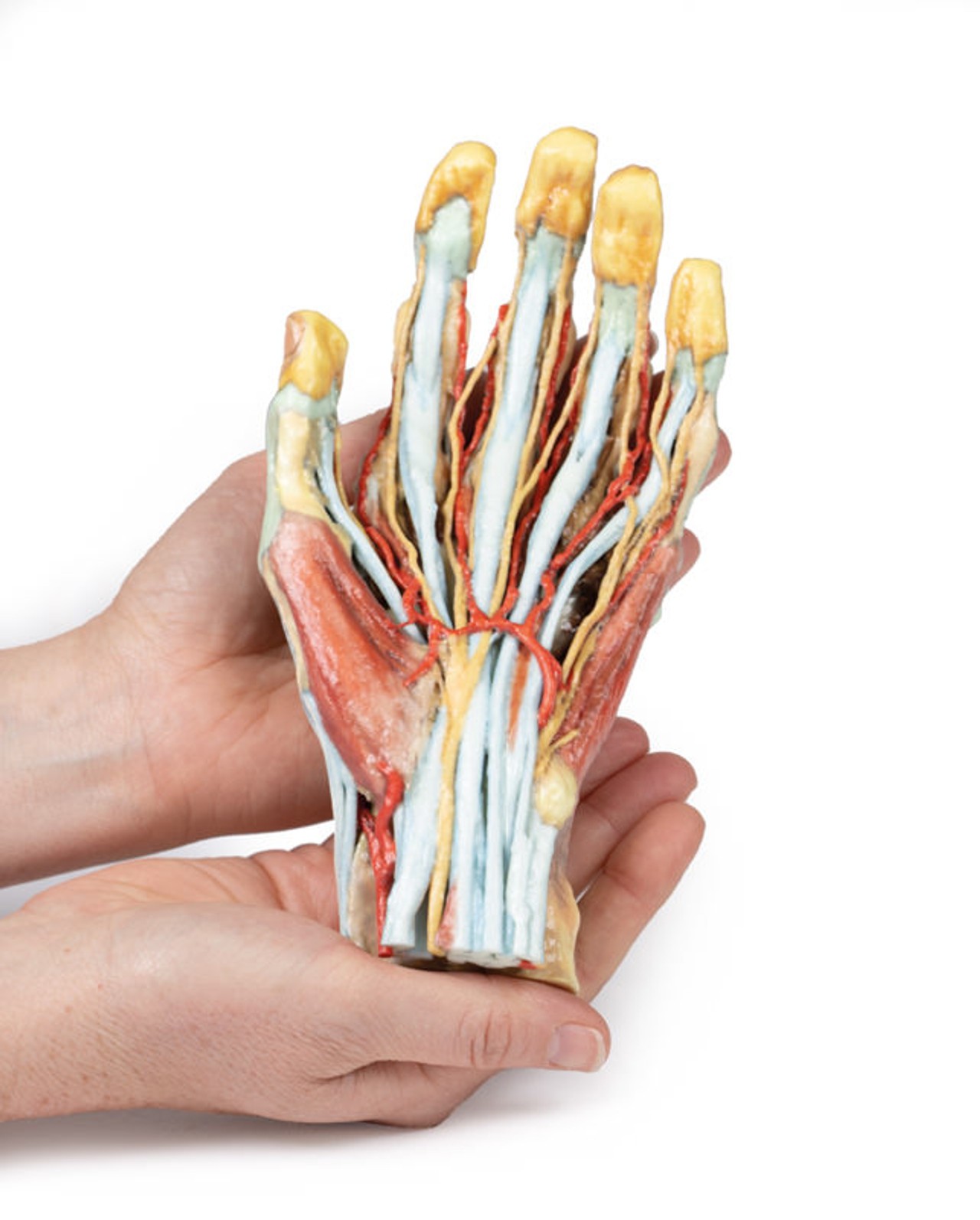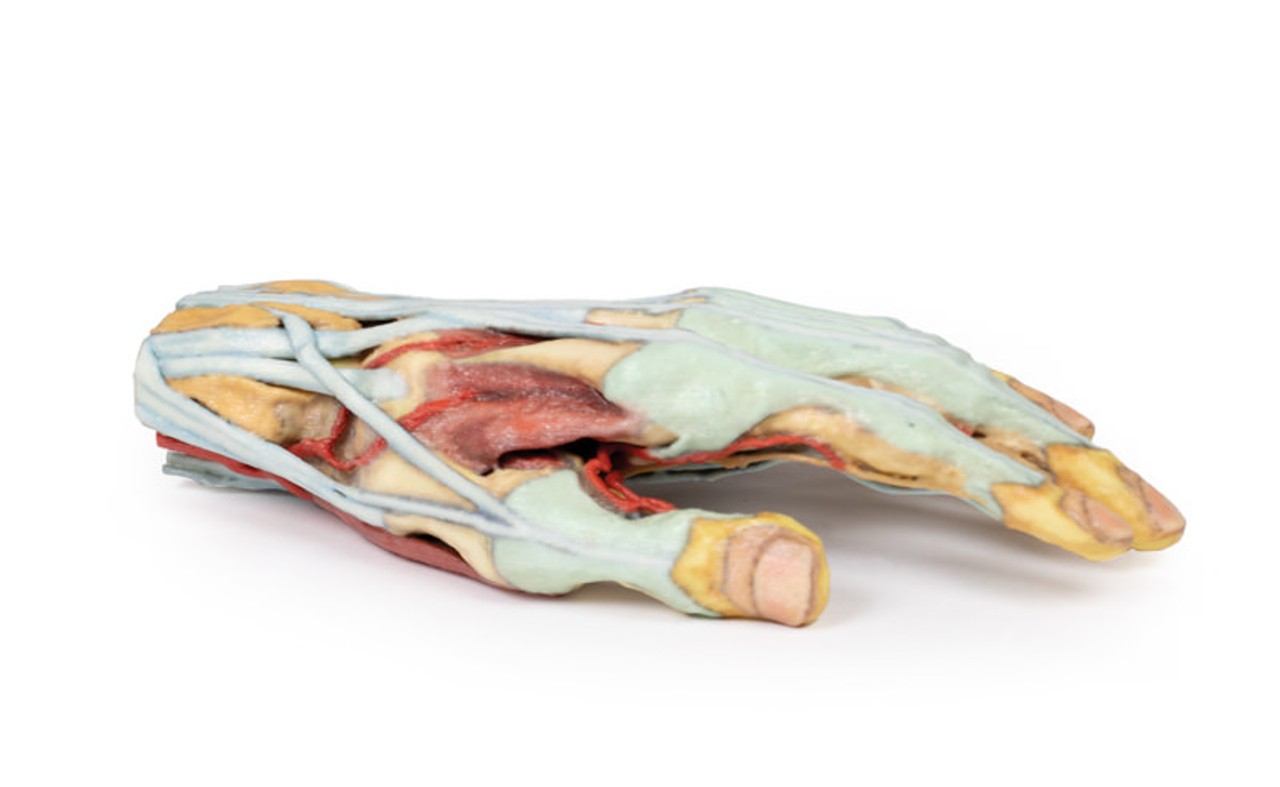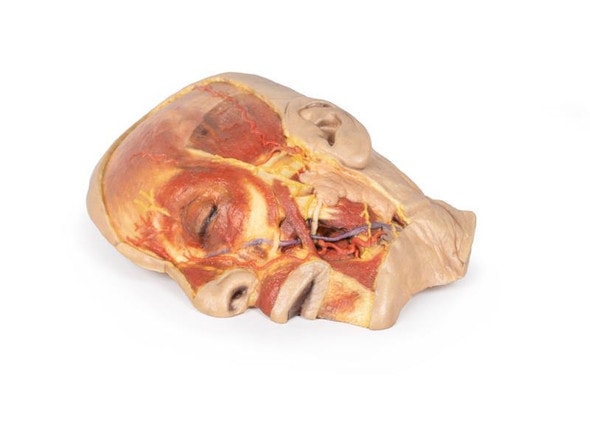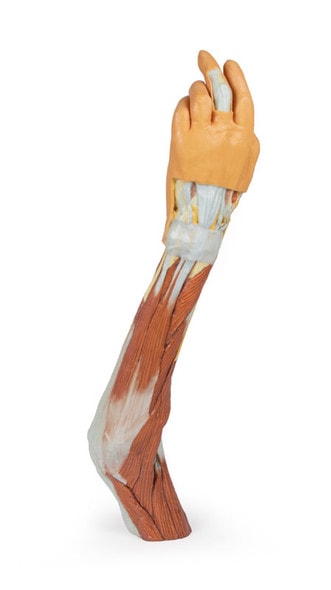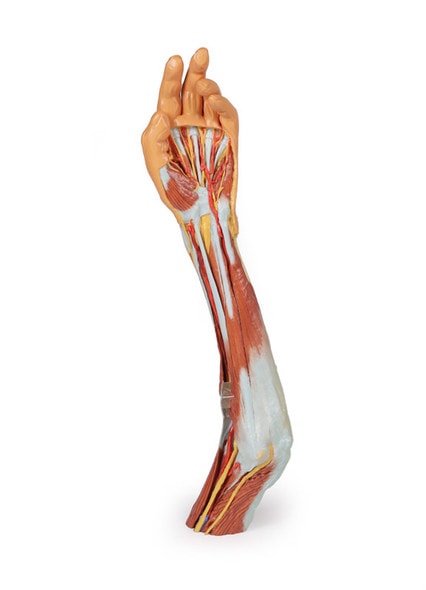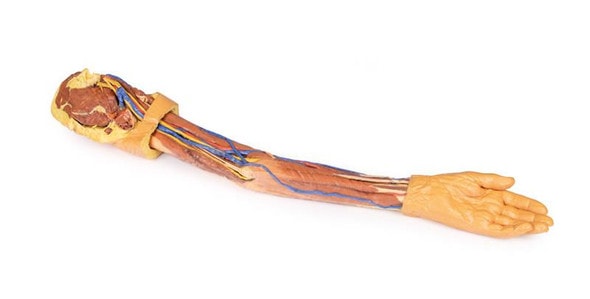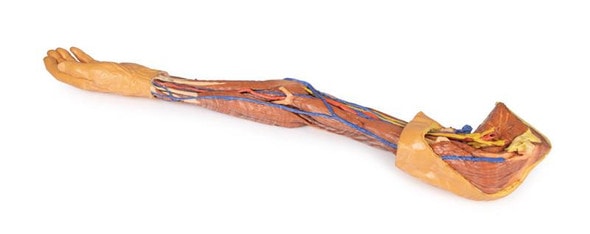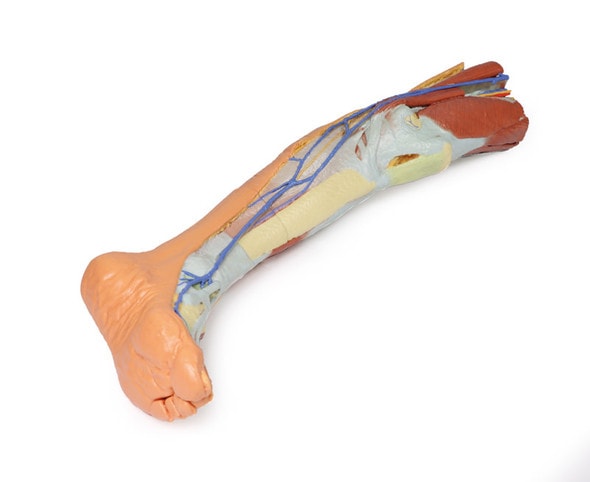Description
At the forefront of medicine and technology, we are proud to offer these incredible, uncompromised replicas of human anatomy. Using the latest 3D printing technology and materials available, this model is an exact replica of a human cadaver, brought to ""life"" by extensive medical scanning and manufacturing technologies. Over are the days of using ethically questionable cadavers, the mess of hazardous preservation chemicals, and the inaccuracies of plastinated models that often over-enhance anatomy for display, not realism. See the future, and the beauty, of real human anatomy with these incredible anatomical replicas!
This 3D printed specimen demonstrates a superficial dissection of a left hand and wrist. Anteriorly, the transverse carpal and palmar carpal ligaments have been removed to expose the tendons and nerves traversing the carpal tunnel and Canal of Guyon. The palmar aponeurosis has been removed to demonstrate the course of the tendons through the palm, the superficial muscles of the thenar and hypothenar eminences (abductors and flexors), and the lumbrical muscles arising from the flexor digitorum tendon. In the digits, the fibrous sheaths have been removed to expose the flexor pollicis longus tendon and the spatial relationships between the flexor digitorum superficialis and profundus tendons as they insert into the intermediate and terminal phalanges. Also visible in the midpalm is the superficial palmar arch with contributions from superficial branches of the ulnar and radial arteries. The superficial palmar arch branches (common palmar) and terminal arteries (proper palmar digital) are visible to the terminal phalanges. Accompanying these vessels are the corresponding common and proper palmar digital nerves from the median and ulnar nerves. Also visible in the wrist are the tendons of the flexor carpi radialis and flexor carpi ulnaris tendons, and the radial and ulnar arteries.
Posteriorly, the radial artery can be seen traversing the floor of the anatomical snuffbox and giving rise to both the deep branch (piercing the first dorsal interosseous muscle) and the dorsal carpal branch. The superficial fascia and extensor retinaculum has been removed to display the course and insertions of the extensor muscle tendons, as well as the tendons of the extensor pollicis longus, brevis, and abductor pollicis longus muscles. Both intertendinous connections and the extensor expansions (with insertions from the first dorsal interosseous and lumbrical) visible.
The hand is 4.5 inches wide, and 9 inches from the wrist to the tip of the middle finger. The index finger is 4 inches long. Wrist circumference is 7 inches. Circumference around knuckles (including thumb) is 10 inches. If the hand is laying flat on a table palm up, the height of it is 3 inches.
Please Note: Thanks to the flexibility of manufacturing that 3D Printing offers, this model is ""printed to order"", and is not typically available for immediate shipment. Most models are printed within 15 working days and arrive within 3-5 weeks of ordering, and once an order is submitted to us, it cannot be canceled or altered. Please contact us if you have specific a specific delivery date requirement, and we will do our best to deliver the model by your target date.
Advantages of 3D Printed Anatomical Models
- 3D printed anatomical models are the most anatomically accurate examples of human anatomy because they are based on real human specimens.
- Avoid the ethical complications and complex handling, storage, and documentation requirements with 3D printed models when compared to human cadaveric specimens.
- 3D printed anatomy models are far less expensive than real human cadaveric specimens.
- Reproducibility and consistency allow for standardization of education and faster availability of models when you need them.
- Customization options are available for specific applications or educational needs. Enlargement, highlighting of specific anatomical structures, cutaway views, and more are just some of the customizations available.
Disadvantages of Human Cadavers
- Access to cadavers can be problematic and ethical complications are hard to avoid. Many countries cannot access cadavers for cultural and religious reasons.
- Human cadavers are costly to procure and require expensive storage facilities and dedicated staff to maintain them. Maintenance of the facility alone is costly.
- The cost to develop a cadaver lab or plastination technique is extremely high. Those funds could purchase hundreds of easy to handle, realistic 3D printed anatomical replicas.
- Wet specimens cannot be used in uncertified labs. Certification is expensive and time-consuming.
- Exposure to preservation fluids and chemicals is known to cause long-term health problems for lab workers and students. 3D printed anatomical replicas are safe to handle without any special equipment.
- Lack of reuse and reproducibility. If a dissection mistake is made, a new specimen has to be used and students have to start all over again.
Disadvantages of Plastinated Specimens
- Like real human cadaveric specimens, plastinated models are extremely expensive.
- Plastinated specimens still require real human samples and pose the same ethical issues as real human cadavers.
- The plastination process is extensive and takes months or longer to complete. 3D printed human anatomical models are available in a fraction of the time.
- Plastinated models, like human cadavers, are one of a kind and can only showcase one presentation of human anatomy.
Advanced 3D Printing Techniques for Superior Results
- Vibrant color offering with 10 million colors
- UV-curable inkjet printing
- High quality 3D printing that can create products that are delicate, extremely precise, and incredibly realistic
- To improve durability of fragile, thin, and delicate arteries, veins or vessels, a clear support material is printed in key areas. This makes the models robust so they can be handled by students easily.

